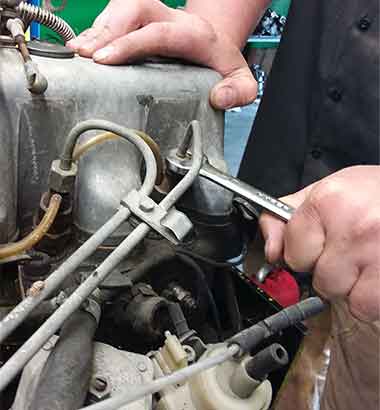A Brief History of the W126 Chassis
Posted by Cassy Leone on Sep 3rd 2021
A Brief History of the W126 Chassis:
by Cassy Leone
The W126, what more can truly be said about this flagship sedan from Mercedes? People that wouldn’t know a Ford from a Toyota in normal conversation, know this is a Mercedes from the look of it alone. Manufactured for twelve years it was an icon. You knew whoever was at the wheel had class, style, and above all- money.
The S-Class W126 remains as a fixture of what Mercedes is all about- innovation and luxury. Most people might not know everything it took to get the W126 on the road, but with its release in 1979, this flagship series was the biggest leap forward that Mercedes had ever done in terms of technology and style.
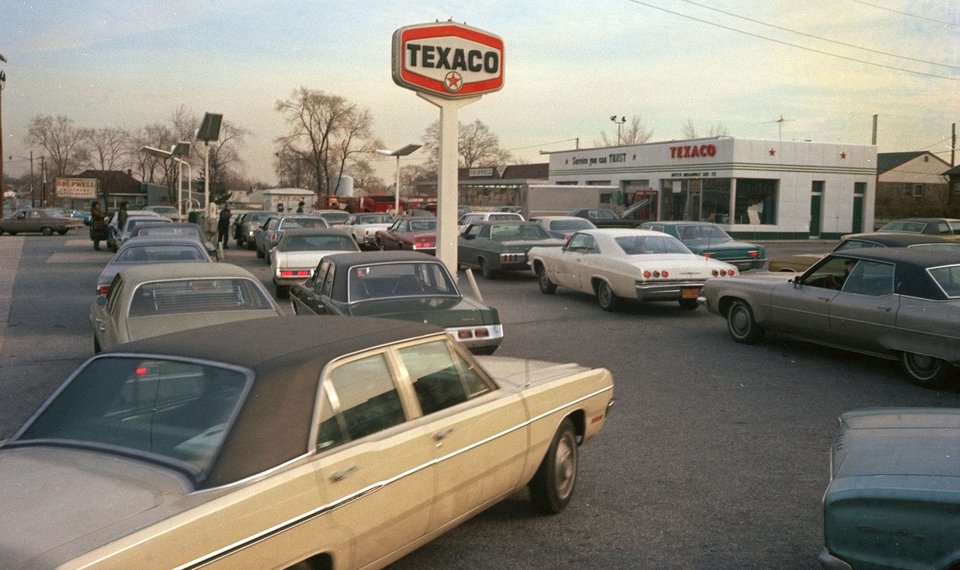
Times Are Changing
However, before we get into the history of the W126, we need to go back a little further to the Gas Crisis of 1973. If you know anything about cars, you know what I’m about to dive into. Without going into the complicated politics of the time, the oil embargo forever changed the automotive landscape the world over.
In America, the rising oil prices caused by the embargo forced automakers to offer cars that gave better fuel economy. They got smaller, with more advanced technology. In one swift move the boxy sedans and trucks once a mainstay of the automotive landscape began to look out of touch. Everything from the B Body cars of General Motors, to the Ford Thunderbird went on a crash diet, and that left luxury automakers in a difficult position in the years to come. For decades, size was the name of the game. Without the benefit of complex computer controlled suspension systems, having a long wheelbase would all but guarantee a smooth ride. All that sheetmetal was heavy, and often required powerful engines to move them. The people that could afford to buy these cars brand new could also afford to not care much about the fuel costs--that was something for other people to worry about. The Gas Crisis changed all that. Automakers struggled to give car buyers everything in one package. A poor design could end up lampooned by the press, like the ill-fated bustle back of the Cadillac Seville which also debuted in America at the same time as the W126 was introduced to Europe.
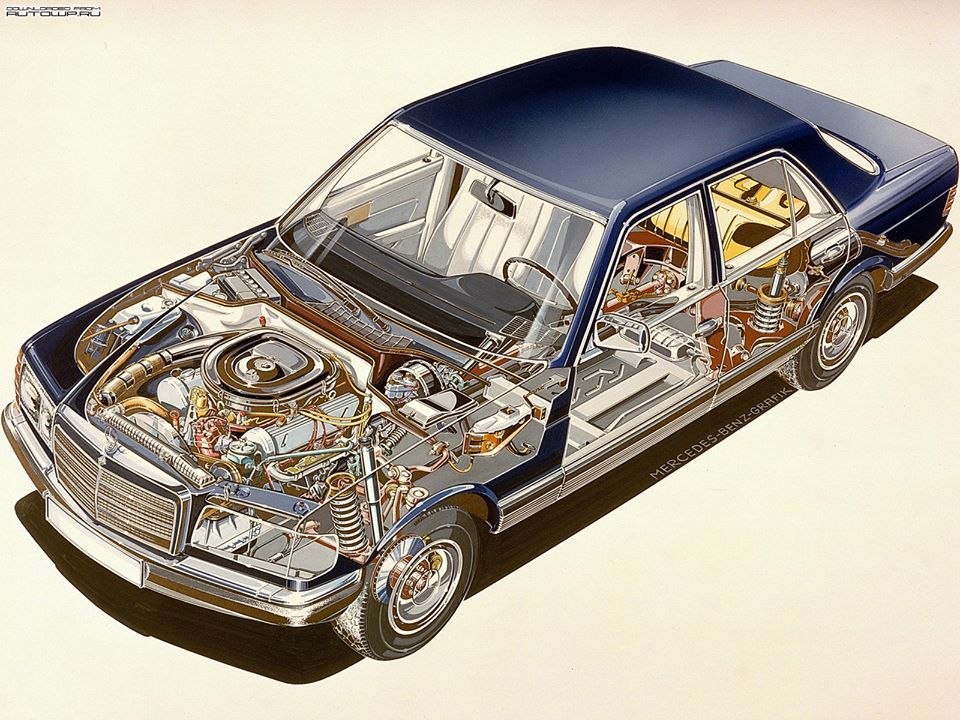
Birth Of A Flagship
So, you can see how there was a lot of pressure riding on Mercedes-Benz to get the launch of the next S-class series right. It needed to be modern without losing the styling cues that made it a Mercedes product. It needed to be powerful while also being fuel efficient and had to be well-built without being too heavy. The task offered a unique challenge to Mercedes engineers and would ultimately come together to form the car we know today.
Engineers built up from the W116 platform, keeping whatever they could. Why change something that didn’t need it? Next, to help cut down on weight while retaining the legendary crash safety Mercedes is known for, they used a stronger and lighter metal for the body structure. The new alloy V8 engines introduced with the W126 were the same weight as their older cast iron straight sixes. This was at a time when most automakers were attempting to squeeze every last MPG out of their aging V8 designs from decades prior with little success. (Check out Chrysler's Lean Burn engine system for a crash course on how to royally screw up in this endeavor.)
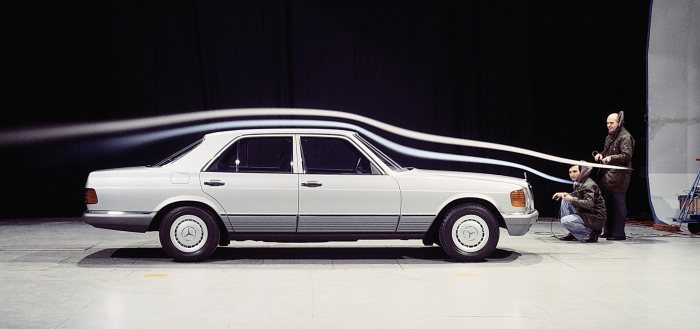
While technically less powerful than the engines coming before them, these new V8s made the W126 Mercedes faster than the W116, thanks to its lighter weight and one other contributing factor- Aerodynamics. Plenty of time spent in a wind tunnel allowed the body to maintain a sense of boxy formality while achieving a wind cheating, gas saving form. For the first time, a Mercedes would be sold without chrome bumpers, as they added too much weight and proved impractical to the overall design. These measures allowed the W126 to be 14% more fuel efficient than the W116 that preceded it.
In the late 1970’s and early 1980’s, safety features were getting closer to what we would know them as today. Technology and design went hand in hand when it came to the W126’s development. It featured crumple zones and the option of ABS and airbags in a time when those things weren’t common from any automaker. In 1978, Mercedes-Benz actually became the first automaker to feature an anti-lock braking system in production models, and in 1984 ABS became a standard of all Mercedes vehicles.
While the W126 was a massive leap forward for Mercedes as a whole, the flagship car would get it’s first real taste of competition in the form of three little letters as the decade wore on- BMW.
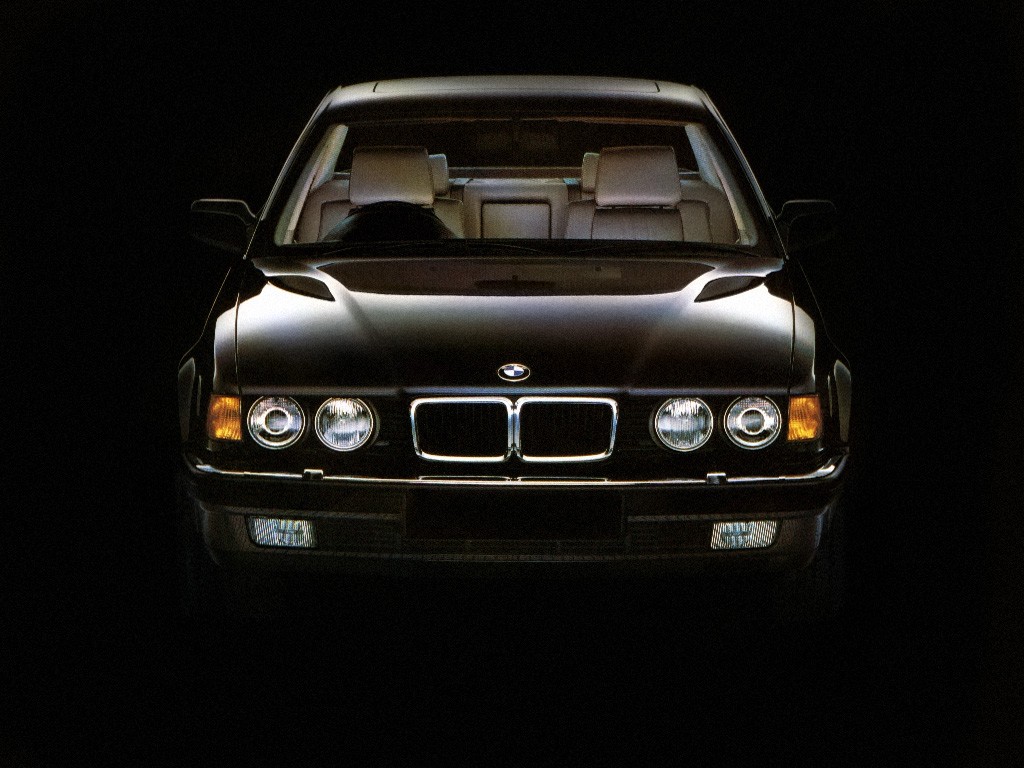
Bad Moon Rising
In the mid eighties, the automotive landscape was due for a shakeup. People that could afford the finer things in life had access to cellphones and personal computers, and that type of technology was getting smaller and faster with each passing year. No longer was it acceptable to simply have a luxury car that was safe, efficient, and well built. Folks wanted what years of living under the gas crisis and growing emissions regulations had taken from them, namely, driving excitement.
It was the end of the Malaise Era, and automakers were getting back on their feet in every price range. The Mustang from Ford had turned the dowdy Fairmont sedan into a sleek coupe with a fuel-injected V8. Volkswagen had ditched the air-cooled Beetle to focus on development of the front-drive front-engined Golf, and even Buick was beginning to show some teeth with the Reatta sports coupe. In the fast-moving decade that was the eighties, what made the W126 seem exciting and fresh in 1979 was starting to show signs of being left behind. In order to combat this, the W126 was fitted with a larger engine, and the 560 model was introduced in 1985, with the 560SE sedan and 560SEC coupe models--the latter ushering in the retirement of the C107 coupe chassis. In addition to this larger mill, the car received bigger wheels and lost the ribbed moulding along the body in an effort to make the already sleek design that much more. This was the beginning of the second generation W126.
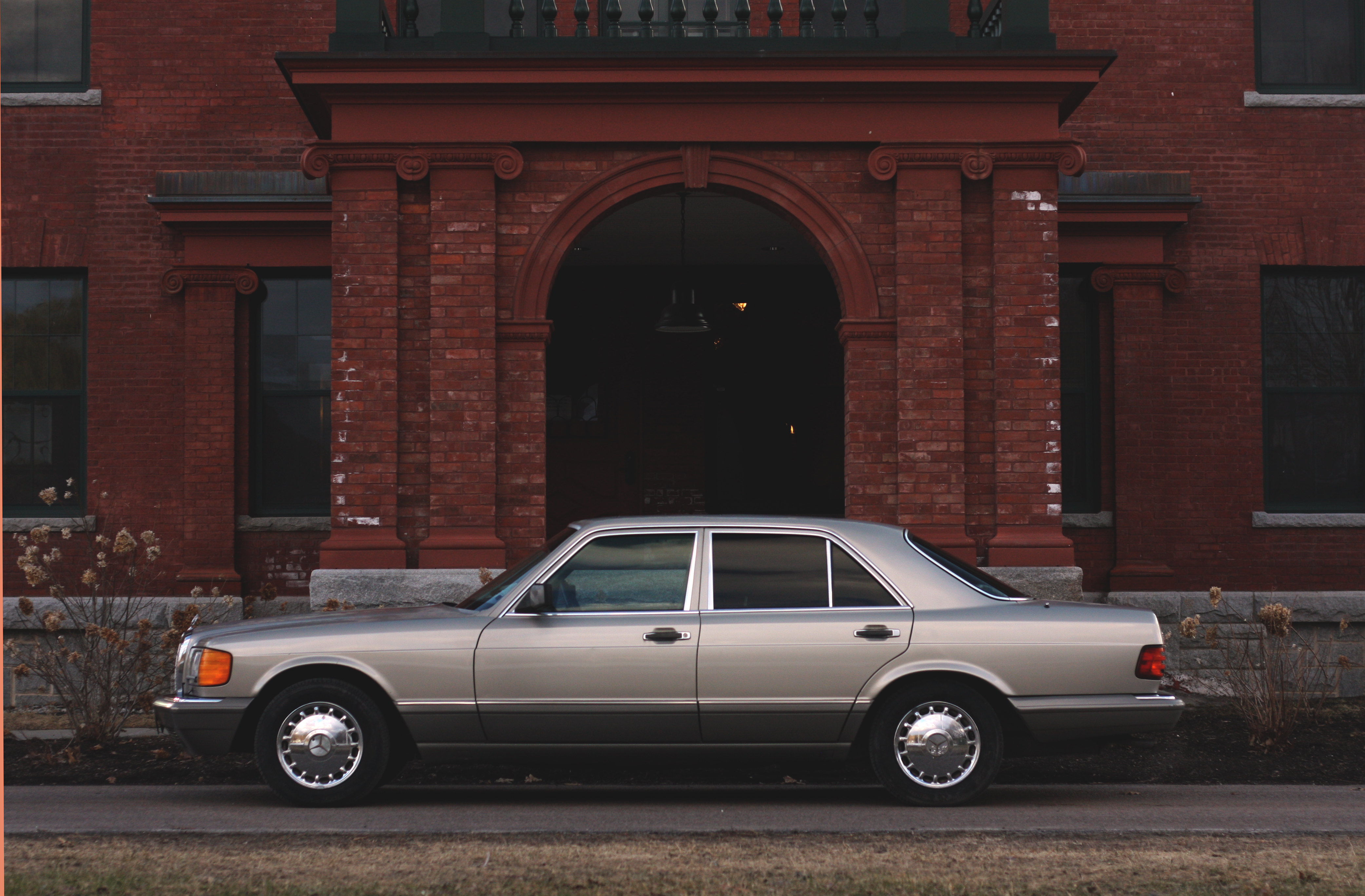
In 1986, BMW, which was once in danger of being taken over by Mercedes, sent a shot across the bow of the three pointed star. It came in the form of their own flagship, the seven series E32. This luxury sedan, with styling from Ercole Spada, featured tighter suspension, more contemporary looks, and perhaps most importantly, the first German V12 since the second world war.
At a stroke, the competition for the best luxury car was heating up. The E32 became the car that the young up-and-coming businessman might choose, while the W126 might have been seen as a car for his father. The review magazines bared this out to a worrying degree, when in 1987, Car, the British roadfaring magazine, had this to say when comparing the Mercedes to a Bentley Turbo R, a Jaguar XJ12 and, the BMW E32 in a road test:
“The Mercedes we can dismiss. It just doesn’t have enough driver appeal. The wooden throttle and the cumbersome handling make this a real bookmaker’s car, for people who know they want a good, big and expensive machine, but don’t much care for how it drives”
- Gavin Green, then editor of Car Magazine
In a few short years, the W126 had gone from king of the hill to very shaky ground. It’s flagship was seen at the time as staid, an aging design built on an already dated platform hailing from the 1960’s. Worst of all perhaps, it was starting to seem ordinary. Just another car, and Mercedes was having none of it. The car that should have gone toe to toe with the likes of the E32, the W140, didn’t hit the market until 1991 and would feature all the things the W126 was seen to lack by reviewers at the time, that is to say, a more sports-focused suspension and an optional V12. The W126 was an example of the old guard of luxury cars. It was large, quiet, well built, and made adequate horsepower. It was designed at a time in which sports cars and smaller sedans were meant to sell to the performance crowd, while the full-size flagship was supposed to sit above all that. No one expected road burning performance with their luxury car… until they did.
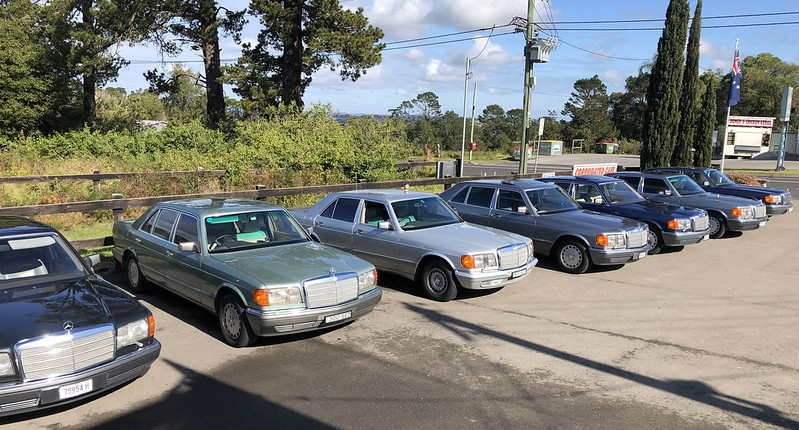
Second Wind
Thankfully, while car reviews of the time can give us an insight into the mind of professional car critics, they do not stand as gospel. (Looking at you, Motor Trend. Bet the Citation being Car Of The Year doesn’t seem like such a great idea forty-one years down the line, huh?) The twelve year production run of the W126 resulted in 892,123 cars being built, spread across all body styles. The W126 is currently the most successful and longest production S-Class. Those that own a W126 in this day and age know that they have something special. Some would call it “the last real Mercedes”, and it’s easy to see where they are coming from. It stands as a testament to good design. One does not need to have a massive engine, or a bevy of technological features to have the very best of something. In fact, the easiest way to have something not break on a car is to not have it in the first place. Yes, owners of the W126 must go without the benefit of touchscreen navigation, magnetic ride control, Bluetooth, or any of the other things we take for granted in our modern cars. However, at the end of the day, the W126 is the oldest modern car you can buy. In that, it has all the things you’d expect of a modern car with its great build quality, airbags, and ABS. You don’t feel like you’re driving a death trap like some cars of it’s same age. Yet it still holds to the old-fashioned notion that something that is well made doesn’t need anything else added to it. A design that can pull that off remains what the Mercedes W126 chassis most certainly is… Timeless Luxury.


